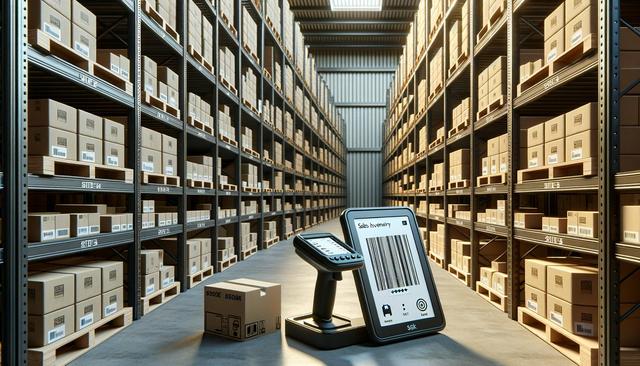
Qué es un almacén de inventario de venta
Understanding What a Sales Inventory Warehouse Is
When exploring the concept of a sales inventory warehouse, it’s important to understand its function within the broader supply chain. In simple terms, a sales inventory warehouse is a facility where products are stored before they are sold to customers. These products can be raw materials, components ready for assembly, or finished goods awaiting distribution. The main goal of such a warehouse is to provide efficient storage and movement of inventory, supporting steady sales operations and timely delivery to customers.
The question “¿Qué es un almacén de inventario de venta?” translates to “What is a sales inventory warehouse?” in English. The answer lies in its name: it is a specialized storage area dedicated to managing stock that is either currently on sale or expected to be sold soon. These warehouses are commonly used by wholesalers, retailers, manufacturers, and e-commerce businesses that need reliable inventory access and control.
Core Functions of a Sales Inventory Warehouse
A sales inventory warehouse serves several essential functions that help businesses maintain accurate inventory levels and meet customer demand efficiently. One of its primary roles is to receive goods from suppliers and ensure they are stored under the right conditions. This includes categorizing, labeling, and organizing items for quick retrieval when orders come in.
Key operations within a sales inventory warehouse include:
- Receiving and inspecting incoming stock
- Cataloging items into inventory systems
- Managing stock levels through inventory control techniques
- Picking and packing products for shipment
- Conducting regular stock audits and cycle counts
These processes make it possible for businesses to reduce stockouts, minimize overstocking, and enhance overall operational efficiency. In fast-paced industries, the ability to manage inventory accurately can directly impact customer satisfaction and profit margins.
Types of Sales Inventory Warehouses
Not all warehouses operate the same way, and the type of sales inventory warehouse a business uses can vary depending on its needs. There are several different models, each tailored to specific operational goals.
- Public Warehouses: Rented storage spaces suitable for small to medium-sized businesses needing flexibility.
- Private Warehouses: Owned and operated by a single company for dedicated use, often seen in larger enterprises.
- Distribution Centers: High-volume facilities designed for rapid order fulfillment and product turnover.
- Automated Warehouses: Technology-driven spaces that use robotics and software to manage inventory with minimal human intervention.
Selecting the right type of warehouse depends on factors such as inventory volume, seasonal demand, delivery timeframes, and budget. The more aligned the warehouse type is with business needs, the more streamlined the supply chain becomes.
Benefits of Using a Sales Inventory Warehouse
Implementing a well-organized sales inventory warehouse offers numerous benefits to a business. One of the foremost advantages is improved inventory visibility, which allows companies to track stock levels in real time and make informed replenishment decisions. This leads to better stock availability, reduced carrying costs, and enhanced order accuracy.
Additional benefits include:
- Faster order processing and delivery
- Lower risk of inventory shrinkage or loss
- Enhanced scalability for growing businesses
- Improved customer satisfaction due to timely fulfillment
Moreover, a dedicated inventory space helps separate sales-ready products from raw materials or returns, making inventory management more efficient and organized. Over time, this separation leads to leaner operations and higher productivity among warehouse staff.
Key Considerations for Managing a Sales Inventory Warehouse
Effectively managing a sales inventory warehouse requires more than just physical space. It involves strategic planning, investment in technology, and well-defined processes. One critical factor is the use of inventory management systems (IMS) that help automate tracking, forecasting, and reporting.
Some best practices for managing a warehouse include:
- Implementing barcode or RFID technology for accurate tracking
- Training staff on handling and safety procedures
- Using layout optimization to reduce picking times
- Performing routine maintenance and cleanliness checks
Another important aspect is demand forecasting, which ensures that stock levels align with expected sales volumes. By analyzing historical sales data and market trends, businesses can anticipate demand spikes and adjust inventory accordingly. This proactive approach reduces the risk of stockouts or overstocking, both of which can be costly.
Conclusion: Why a Sales Inventory Warehouse Matters
For businesses involved in selling physical products, a sales inventory warehouse is a foundational element of the supply chain. It supports operational efficiency, enhances inventory control, and ensures that products are ready for timely delivery. Whether you’re a small retailer or a large-scale distributor, optimizing your warehouse strategy can lead to cost savings, faster fulfillment, and improved customer service.
Understanding what a sales inventory warehouse is—and how to manage it effectively—can give your business a competitive edge in today’s fast-paced market. By investing in proper infrastructure, technology, and processes, companies can build a resilient inventory system that adapts to changing demand and supports long-term growth.